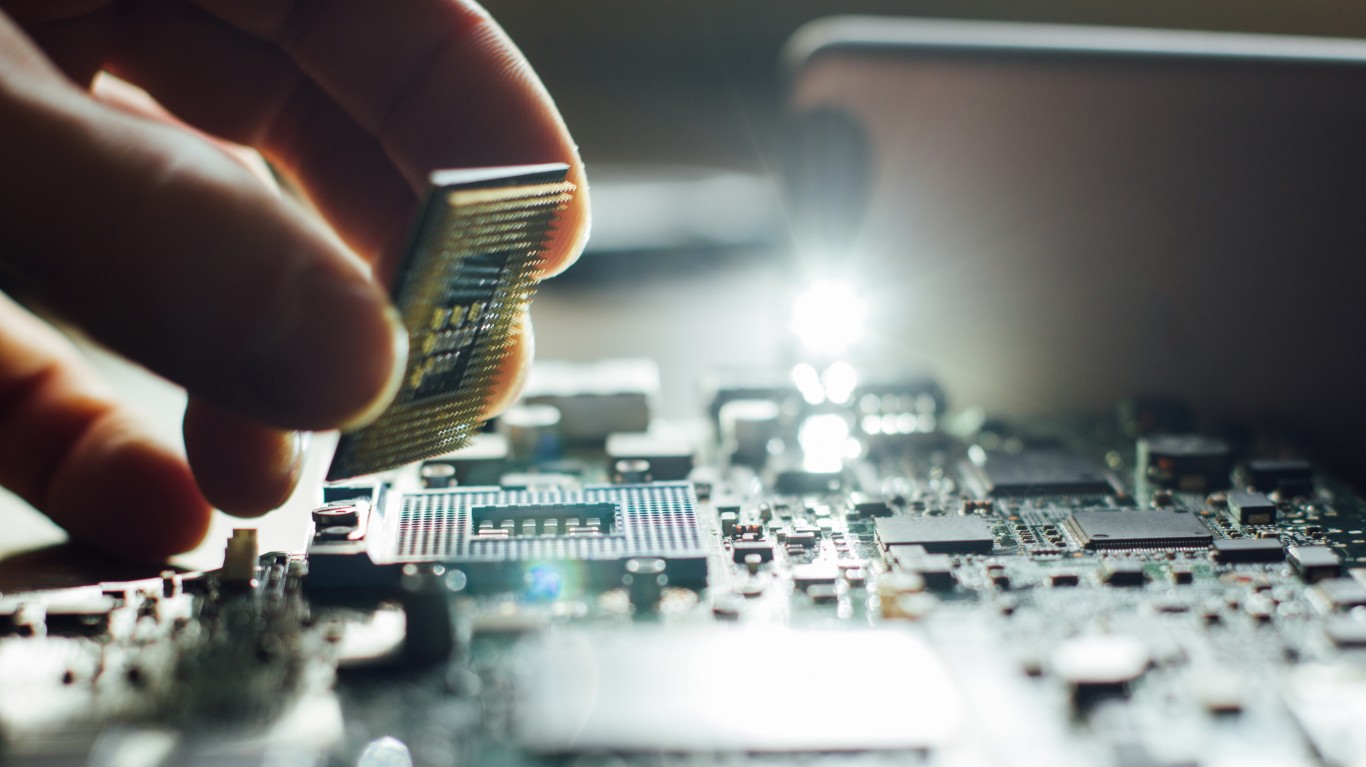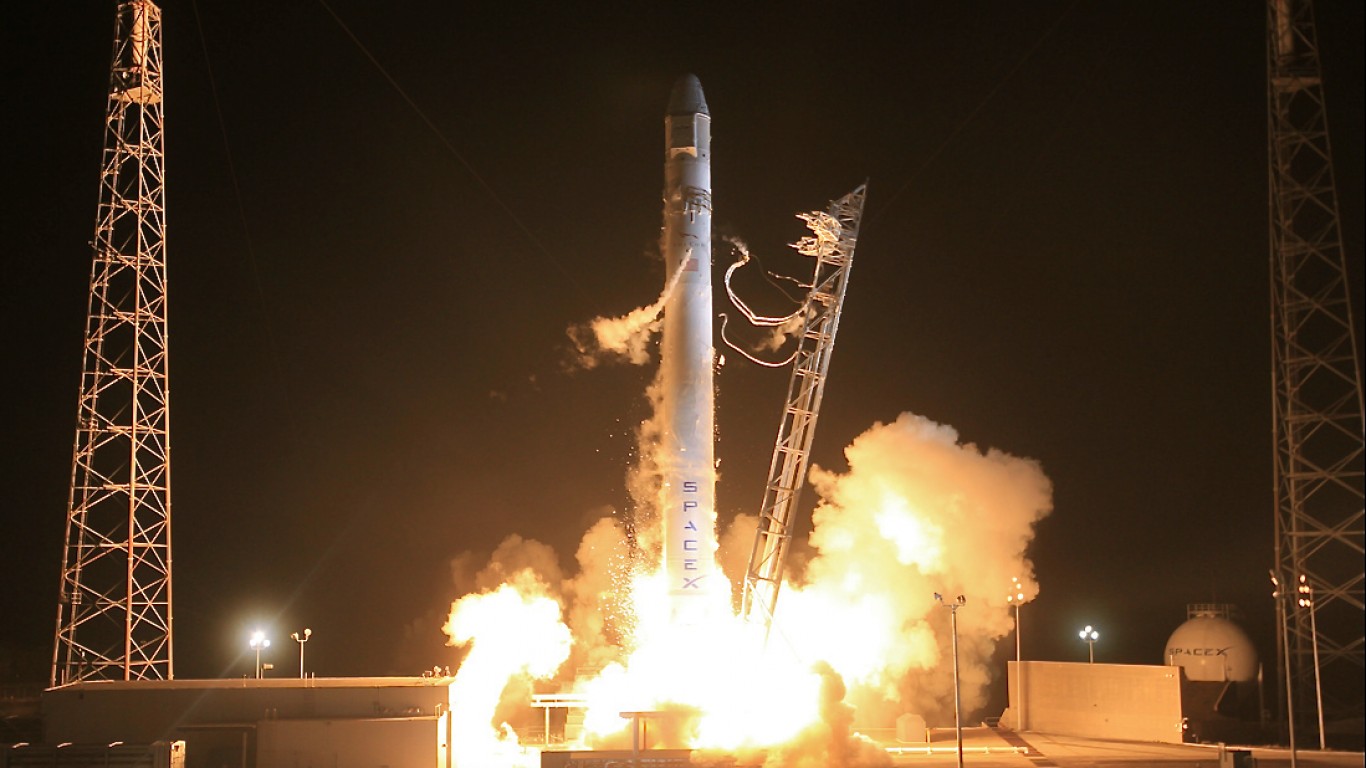
Advanced Micro Devices (NASDAQ: AMD) stock has thoroughly shrugged off the coronavirus pandemic and the fallout that pervaded the market. The company has risen above the crisis and the stock market in general. It is no exaggeration to say the future is looking brighter for AMD, while AMD is making the future brighter.
AMD stock hit all-time highs back in February, like many other stocks before the COVID-19 pandemic took full effect. However, AMD shares rebounded to just below these levels in the following months and they are currently within striking distance.
Meanwhile AMD is taking a proactive approach to dealing with COVID-19 in the best way that it knows how — developing chips that power supercomputers to track and combat the virus.
Even more, AMD is powering one of the biggest forces in the market right now.
Fighting COVID-19
AMD is partnering with Penguin Computing, a division of SMART Global Holdings, Inc. (NASDAQ: SGH), to supply supercomputers to three universities, while also empowering researchers across the globe.
The three universities are New York University, Massachusetts Institute of Technology and Rice University. They will receive complete AMD-powered, high-performance computing systems from the AMD HPC Fund for COVID-19 research.
Separately, AMD announced it will contribute a cloud-based system powered by AMD EPYC and AMD Radeon Instinct processors located on-site at Penguin Computing. This will provide remote supercomputing capabilities for selected researchers around the world.
Combined, the donated systems will provide researchers with more than seven petaflops of compute power that can be applied to fight COVID-19. A petaflop is the ability of a computer to do one quadrillion floating point operations per second. That’s a lot of data.
The universities will deploy this computing power across a range of pandemic-related disciplines, including genomics, vaccine development, transmission science and modeling.
AMD has also opened the door for scientists conducting COVID-19 research around the world to request access to the remote AMD-powered cloud HPC cluster at Penguin Computing. With all the analytics going on in regards to the virus, this will offer researchers a substantial boost.
Playing the Pandemic
If the COVID-19 pandemic has fueled anything besides research towards a vaccine, it has fueled the video game industry. As more players are stuck at home, there is a renaissance in video games and the companies that provide them.
Looking ahead, the Sony PlayStation 5 and Microsoft Xbox Series X are coming out this holiday season. With these will come a barrage of new games and better graphics. AMD comes into the picture as it will be providing customized chips for both of these systems.
This is an exclusive relationship for AMD with Sony and Microsoft. According to AMD’s CFO Devinder Kumar, “[This relationship] is something that we can count on for many, many years to come.”
AMD’s partnership with these video game giants is only the beginning. The company is also partnering with another big player.
Powering the “Death Star”
Earlier this month, AMD announced that its chips are powering Amazon’s fastest growing and most profitable business, Amazon Web Services (AWS).
It said new 2nd Gen AMD EPYC processor powered Amazon Elastic Compute Cloud (EC2) C5a instances are now generally available in the United States, Europe and Asia Pacific regions.
In the past, Amazon has been seen as an intimidating market force with the ability to move into any industry and take over. Some analysts have — not always affectionately — called Amazon the “Death Star.”
While the jargon of “EC2 C5a instances” sounds daunting, it refers to the generation (2nd) and type of processor. What this really means is that Amazon is improving its AWS business by using more high performance and cost-effective chips.
Although workloads and processing needs may vary for customers across the spectrum, the EC2 C5a helps Amazon optimize both cost and performance for AWS customers.
Amazon’s customers are looking to use this service across a variety of compute-intensive workloads. These include video game development and hosting, which take advantage of the high CPU core counts and memory ratios provided by C5a.
With friends like this, AMD’s future seems to be bright. At the same time, AMD is making the future brighter with its computer chips powering the research to stop COVID-19.
Thank you for reading! Have some feedback for us?
Contact the 24/7 Wall St. editorial team.
 24/7 Wall St.
24/7 Wall St.


